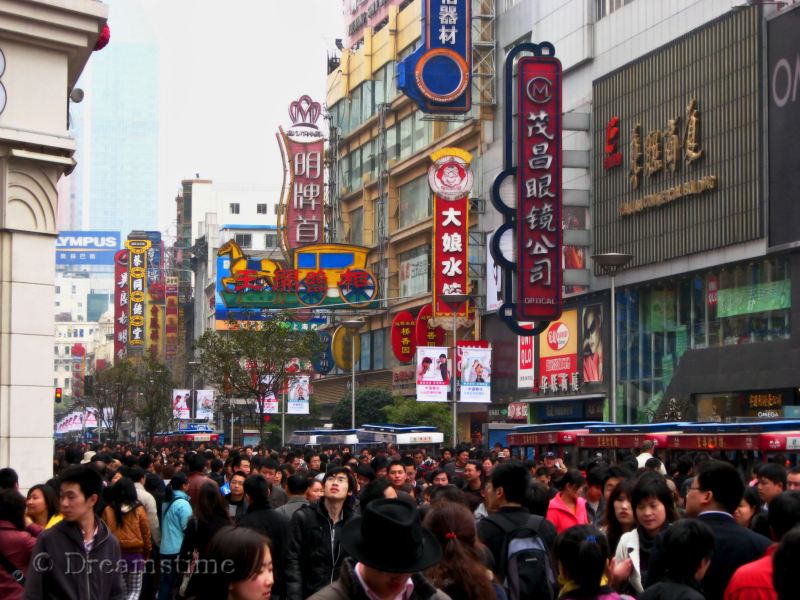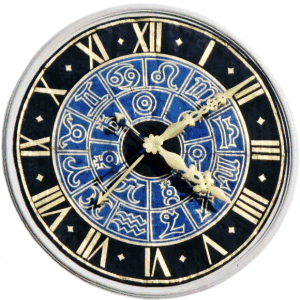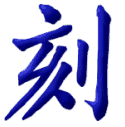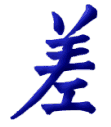Date and Time in Chinese
Once you have mastered the numbers 0 to 9 you are well on the way to telling the date and time in Chinese.

Day of month
Western Arabic numbers (0 to 9) are now used for the names of the days of the week and also the months (with a couple of exceptions). Before 1912 a different system of characters was used and in the distant past China even had a ten day week.
Weekdays are simply the two characters for ‘weekday’ followed by the number of the day in the week.
 Sounds like: hshing this has no direct equivalent in English. (1st tone)
Sounds like: hshing this has no direct equivalent in English. (1st tone)The character for star is a combination of 日 rì (see following) above the character for 生 shēng produce. It gives the idea of stars as stellar fragments suggesting the long tradition of using astronomical observations to measure time.
 Sounds like: tchee, an identical sound to 七 qī for 7. (1st tone)
Sounds like: tchee, an identical sound to 七 qī for 7. (1st tone)This is linked to the ‘phase of the moon’ and so appropriate for weekdays (the traditional calendar synchronized dates with the moon). The moon 月 yuè forms the second part of the character. Putting this together 星期 xīng qī is a weekday. There are no special weekday names to learn except for Sunday. As in Latin, French, English and nearly all cultures the seventh day of the week in China is named after the sun.
 Sounds like: ruh the ‘r’ sound is not the same as in English. (4th tone)
Sounds like: ruh the ‘r’ sound is not the same as in English. (4th tone)The character for sun is an ancient pictogram, it is derived from a round circle with an all seeing eye in the middle. Following the simplifying convention for drawing characters this has become a box with the dot becoming a line. When combined with 期 qī the characters 日期 rì qī means ‘date’, a day in the year.
The sun is a potent symbol, and is the embodiment of ‘yang’ in nature. Associated with the east (from where it rises) and the emperor. Solar eclipses were important events, and were often seen as showing heaven’s displeasure at the emperor’s rule. The continuing importance of the sun in China can be appreciated from its place in the anthem associated with Chairman Mao ‘The East is red; the Sun rises ➚’.
 Sounds like: tyan as in Christian. (1st tone)
Sounds like: tyan as in Christian. (1st tone)The character looks like large, big 大 dà with an extra line to indicate the sky above it. 天下 tiān xià (all below heaven) has been used as a name for China from the earliest days. The character for sky can be used in place of ri for Sunday.
So the complete set of weekdays is:
There is an alternative way to give the weekdays.
 Sounds like: joe (1st tone)
Sounds like: joe (1st tone)The character for ‘cycle’ or ‘circuit’ is a combination of 口 kǒu ‘mouth’ below the character for 土 tǔ ‘earth’ inside a box.
So Monday can also be (and the rest of the week as before just by changing the day number):
Days and months in Chinese
China adopted the Gregorian / western calendar at the foundation of the Republic of China on 1st January 1912 but it took many years before the traditional Chinese calendar fell out of use and it is still used to fix the date for many festivals. Days of the month used to be given different names but are now expressed as Arabic numbers.
 Sounds like: you-eh. (4th tone)
Sounds like: you-eh. (4th tone)
The character is derived from the shape of the crescent moon on its side. The Chinese character for month is named after moon just as in English and all other cultures as a month is the lunar cycle. It is the opposite to sun in the yin-yang system. The moon is the epitome of ‘yin’ - cool and feminine. It symbolizes the empress rather than the emperor. The autumn Moon Festival is widely observed when many moon cakes are consumed.
The Chinese written character for ‘day’ is 日 rì but in speech the alternative 号 hào is used for day. The order for dates in Chinese is to give the year followed by month and then day.

Years
In the modern calendar, years are given as numbers without the units for ‘thousands’, ‘hundreds’ and ‘tens’, the digits are just read out in turn with the addition of the character for ‘year’ after the complete number. In the dynastic past, years were recorded as the sexagesimal number year number within the emperor's reign.
 Sounds like: start of nyan (2nd tone)
Sounds like: start of nyan (2nd tone)Originally the character was of a man carrying a sheaf of harvested corn - the culmination of a year of toil in the fields. Over the years the character nian for year has changed so the symbolism is not so easy to see. The 年 nián monster is the subject of the legend of the foundation of the Spring Festival (Chinese New Year).
Telling the Time in Chinese

Hours and minutes can be given as numbers as in English. All Chinese clocks show the time in Arabic numerals and it is written down this way too. However just as in English there are some special phrases for half hours, quarters and expressing time to the next hour. Originally the Chinese had twelve divisions of a day 时辰 shí chen and the double hours were named after the twelve earthly branches. There was also an early system of dividing the day into 100 divisions of 14.4 minutes : a 刻 kè but this has now changed to follow the worldwide convention of 15 minutes ‘quarter of an hour’.
The simplest way to give the time is as a decimal number hours ‘.’ minutes. The dot character in Chinese is diǎn, it is short for the full term 点钟 diǎn zhōng clock. The time is followed by the character fēn to indicate minutes. If the context makes it clear that it is a time of day then fen can be left out.
 Sounds like: dyan with a drop of tone in the middle (3rd tone)
Sounds like: dyan with a drop of tone in the middle (3rd tone)The origin of the character goes back to the method of divination using the splits of tortoise shells to foretell the future. The modern form retains the idea of fire symbolized by the four dots underneath the character for divination.
 Sounds like: fun rather than fen. (1st tone)
Sounds like: fun rather than fen. (1st tone)The character is made up of two parts (divide and knife) both giving the idea of cutting and division. Fen is also used for the smallest division of currency.
 Sounds like: kur . (4th tone)
Sounds like: kur . (4th tone)The character is made up of two parts (pig year and knife) which also giving the idea of cutting and division. Ke represents 15 minutes – one quarter of an hour.
 Sounds like: char . (4th tone)
Sounds like: char . (4th tone)Just as in English you can say ‘quarter to’ for example 3:45 can be expressed as 4 hours less one quarter.
Here are some examples of times in Chinese.
One more little strange rule is needed, there are two forms of the number 2 : èr and liǎng. As two hours are considered a couple of hours rather than 2 hours it is written with liǎng rather than èr.
Time of Day in Chinese
The Chinese do not use the 24 hour clock, so afternoon, morning or evening is needed to give the time of day. These phrases include:
Full date and time
Here is an example putting together a full date and time. The order is always longest units first, and the time of day is put before the hours.
èr líng èr sān nián bā yuè shí qī rì xià wǔ sì diǎn èr sān fēn
Vocabulary
Sound files kindly provided by shtooka.net ➚ under a Creative Commons Attribution Share Alike License.